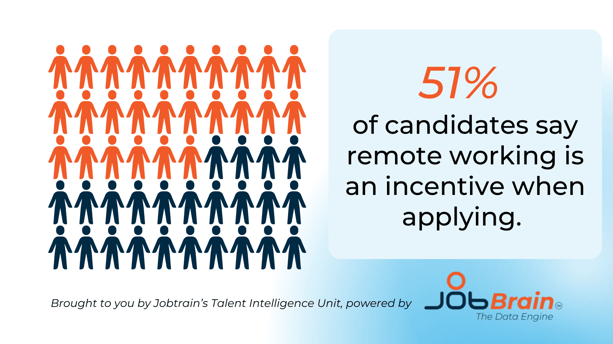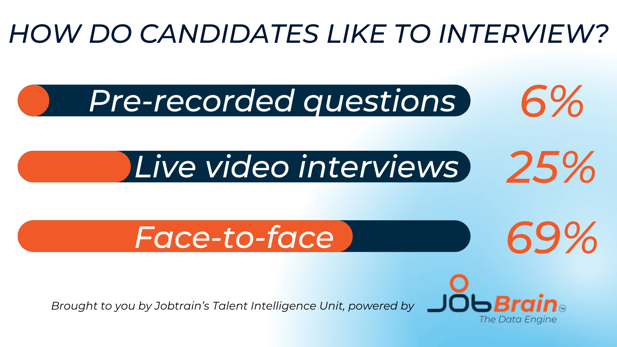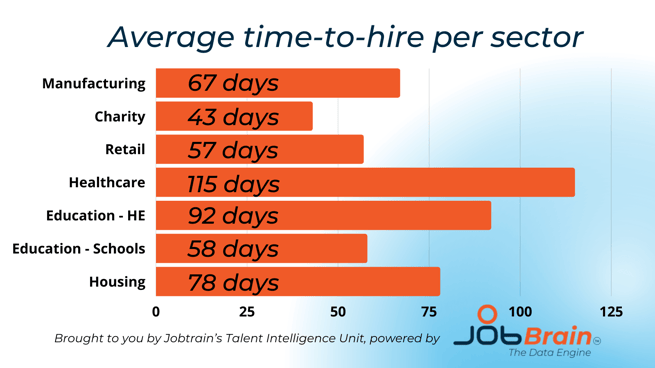Another year, another set of obstacles for small businesses across the UK to overcome! The landscape of recruitment can be ever-shifting, but have no fear - we've assessed 6 possible recruitment trends for 2022!
Brexit will keep impacting the vacancy gap
The current vacancy gap in the UK is only predicted to grow. The country has already lost 1.2 million EU nationals in the last year alone, citing Brexit and COVID-19 as the primary causes for moving on.
EBC Global predicts that this number will double next year. Until the UK Government offer small businesses more help, those sectors hit hardest by this mass exodus will need to find new, creative ways to hire UK nationals, or navigate hiring workers from overseas.
Remote Working will still be important
Jobtrain’s Talent Intelligence Unit – JobBrain – has noted that 51% of candidates see remote working as an incentive when applying to an organisation. Considering the vast amount of jobs out there, this will be a prime opportunity for businesses that do offer working from home. Be sure to clearly communicate it in your job advertisement, because we’ve learned that candidates are looking for it!
 A candidate-driven job market
A candidate-driven job market
The pandemic has given us all new priorities in our lives, and the reality is workers have learned to know their worth! Jobseekers know what they’re looking for, and they’re willing to keep searching until they get it, so as hiring managers looking to fill those vacancies, we need to accommodate to the best of our abilities.
If this does remain the case, the easy way to do this is to revise your interview strategy for the new year. JobBrain learned that 69% of candidates prefer face-to-face interviews to give them a sense of your company culture. So even if you’re offering remote working, organise a chat in your offices – or if you’ve done away with offices altogether, consider a coffee shop!

Don’t forget the importance of your time to hire reports. Are you keeping up with the average number of days it takes to get a candidate in the front door? Better yet, are you surpassing them? If the market is driven by candidates, you don’t want them to get excited by an opportunity that simply approaches them before you do!
Check out the average time-to-hire in the UK's biggest sectors below.

Statistically, your recruitment process isn't mobile enough
As of 2020, mobile applications (51%) overtook desktop (49%), and that shift may very well continue. Assess if your application process is mobile-friendly. What does the text look like on a phone? If you’re using an ATS, does it offer media-rich ads and videos? Does your application take longer than 30 minutes to complete If so, you need to revise this – we have a full article which elaborates on this - here.
Recruiting Generation Z will mean big changes
When we think of Generation Z, we likely think of teenagers on Tik Tok, but Gen Z officially entered the workplace a few years ago, ranging up to 24 years old. This means that not only is the marketplace candidate-driven, but it’s young as well! There are 1.1 million vacancies out there, expected to grow further, so this new, young workforce is going to make it clear what their priorities are.
We’ve noticed that as of this year, 90% of candidates think a clear ED&I policy is important when applying for a job. Our priorities are going beyond just adhering to legal standards, if you want to attract the best, creative talent out there, it’s time to assess if your ED&I policy is clearly communicated and up to date.
Luckily, there are a couple of easy wins here: Do you include your accreditations in your job ads? Can a candidate download your policy? Is your policy up to date?

Prepare for "the great resignation"
According to the Guardian, 1 in 4 employees are planning a job change in the new year. Many businesses are putting policies in place already to reduce employee attrition. They’re keeping benefits and compensation current, prioritizing mental wellbeing as we readjust to the “new normal,” and most importantly of all – being pro-active and flexible.
Interestingly, this comes back to remote-working. According to Yoh, 42% of workers would consider resigning if flexible working isn’t offered. Moving into 2022 it’s absolutely vital that you formalise your flexible working policy and communicate this to your staff – it could save you their resignation letter!
We don’t expect 2022 to be a tougher year than 2021, just more ramped up. It’s likely you’ve started to internally consider which areas you need to improve before the new year, but if you think a change in recruitment software could be the fix you need – we’re here to help!